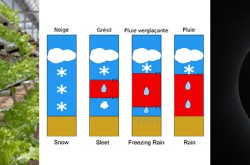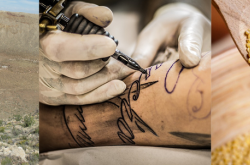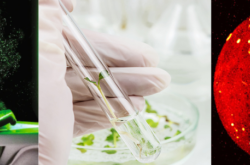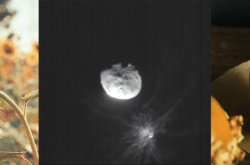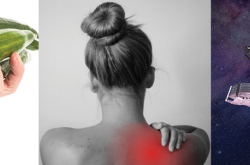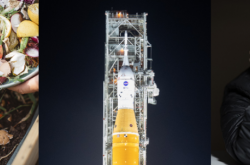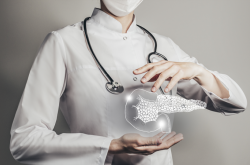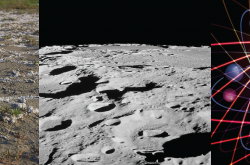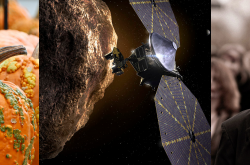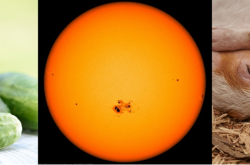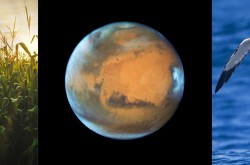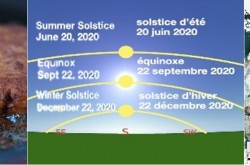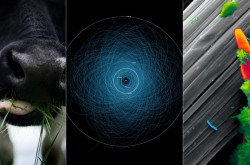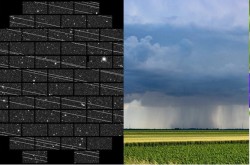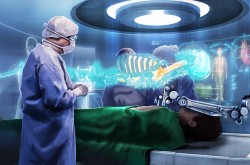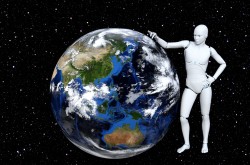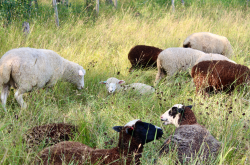3 things you should know about artificial intelligence, planetary defence, and insulin

Meet Renée-Claude Goulet, Cassandra Marion, and Michelle Campbell Mekarski.
They are Ingenium’s science advisors, providing expert scientific advice on key subjects relating to the Canada Agriculture and Food Museum, the Canada Aviation and Space Museum, and the Canada Science and Technology Museum.
In this colourful monthly blog series, Ingenium’s science advisors offer up quirky nuggets related to their areas of expertise. For the November edition, they dive into how artificial intelligence can automate greenhouse operations, NASA’s upcoming asteroid defence mission, and why exactly insulin is so critical to our bodies.

Artificial intelligence is helping to grow your cucumbers
If you’ve ever tried growing your own vegetables, you know it requires a lot of time and effort to ensure healthy plants and a bountiful harvest. But what if we could grow more vegetables in a smaller space…and with minimal manual labour? Artificial intelligence (AI) has the potential to do just that.
In 2018, a researcher with Agriculture and Agri-Food Canada — along with a multidisciplinary team of experts — won first place in the Autonomous Greenhouse Challenge. In just four months, Dr. Xiuming Hao and his team grew approximately 14,400 cucumbers in 96 square metres of remotely-controlled greenhouse space. Using an AI dashboard, the team constantly monitored the crop to ensure optimal water, light, and temperature in the greenhouse. By examining 300 photos of the crop each day, they could monitor for even the smallest signs of problems, and teach a computer to recognize these and take action.
Just like Dr. Hao’s greenhouse, AI today is based on machine learning and advanced pattern recognition. This means AI is not autonomous and sentient like in sci-fi movies — it requires humans. By feeding in real-world data and explanations for what this data means, humans train computers to recognize patterns and make decisions. Then these computers constantly gather data through sensors, interpret it, make predictions, and make adjustments to the systems they’re connected to. By detecting patterns in data, AI computers can learn, on their own, to become more efficient at doing what they are programmed to do.
Increasingly, companies are developing AI systems to automate many of the daily operations in greenhouses — from climate control to integrated pest management and disease control. In fact, it is now possible to detect conditions indicating plant health problems before they even appear, all through cameras and sensors feeding data into AI programs. Many groups are getting in on the research. For instance, a program at Vineland Research and Innovation Centre focuses on developing computer vision systems, which use cameras to “detect, localize and characterize cucumbers in a greenhouse.”
All this is good for sustainability, particularly in a country like Canada where harsh winters mean access to fresh, local produce is limited for part of the year. Thanks to more than 800 commercial vegetable greenhouse operations, Canadians can find fresh, locally grown peppers, tomatoes, cucumbers, lettuce, green and yellow beans, eggplants, and herbs in grocery stores year round.
In more good news, greenhouse-grown produce that’s sold locally minimizes the distance food travels to consumers, thus reducing the greenhouse gas emissions associated with imported food. Perhaps with better automation, Canadians can grow a wider range of produce nearby. In the face of shrinking agricultural land, climate change, a growing population, and a focus on eating locally, automated greenhouses are sure to become a bigger part of our food system.
By Renée-Claude Goulet

Illustration of two asteroids, Didymos A and its moon Didymos B (Didymoon) with NASA’s DART spacecraft and the Italian Space Agency’s cube satellite.
A test to save the planet: NASA to launch first asteroid defence mission
NASA plans to launch a spacecraft that will intentionally crash into an asteroid, and it’s all in the name of planetary defence.
The Double Asteroid Redirection Test (DART) Mission is scheduled to launch on a Falcon 9 rocket on November 24, 2021. It will take about a year for it to reach the asteroid Didymos and its moonlet, informally named Didymoon. The two bodies form what’s called a binary asteroid system, meaning one orbits the other. The plan is to fly the spacecraft into the smaller, 160-m wide Didymoon with as much energy as possible.
The mission’s expectation is that the impact will change Didymoon’s orbit; it will knock it on a slightly different path by changing the speed at which it orbits. Although the change will be tiny, it should be significant enough to be observed via telescope by scientists back on Earth. This binary pair were chosen as a target because it’s far easier to observe the post-impact effects of a tiny moon relative to the larger asteroid it orbits, than to detect subtle changes in a single asteroid’s trajectory. NASA hopes to provide evidence that a similar approach could be used in the future, to divert a potentially hazardous object (PHO) from posing a risk to Earth.
Don’t worry, the Didymos asteroids are not on a collision course with Earth! In fact, there is no known large asteroid that currently poses an imminent threat. However, there are over 20,000 near-Earth objects (NEOs); these are rocky bodies that orbit the Sun but come close to the Earth. Of those, approximately 5,000 NEOs are considered to be PHOs, as they are over 100 m in diameter and have the potential to impact our planet. Several space agencies worldwide are working on a variety of strategies and technologies to mitigate an impact by PHOs. NASA’s DART mission will be the first full-scale effort to put one of these technologies to the test.
A tiny Italian cube satellite acting as a passenger on DART, called LICIAcube, will separate from the DART spacecraft before the impact to document the event. The asteroid’s changes in trajectory will be characterized by space and ground-based telescopes. A follow-on mission called HERA — launched by the European Space Agency, in partnership with NASA — is scheduled to arrive three years later, to characterize the physical properties of the impact’s effect on the moonlet.
As if saving the planet isn’t enough, this mission also carries several technology demonstrations onboard, including a new electric propulsion system, the NEXT-C ion engine, solar panels that unroll, and SmartNav, a type of autopilot that will use imagery to autonomously crash DART into Didymoon.
Will humans be able to alter the dynamics of the solar system? Stay tuned for the 2022 impact.
By Cassandra Marion

Diabetics must constantly monitor their blood sugar levels and administer insulin to keep their blood sugar within a normal range.
Insulin: A Canadian discovery celebrates 100 years
Imagine a six-year-old child surrounded by empty candy wrappers, chocolate smeared on their fingers, and a mischievous grin spread across their face. What happens next? You might expect a ‘sugar rush’ — a period of hyperactivity caused by high levels of sugar in the blood. However, this common belief is more of a myth than reality.
In truth, too much or too little sugar can be life threatening. Luckily, our bodies are very good at balancing the amount of sugar in our blood. The hero of this balancing act is your pancreas: an organ that sits just behind your stomach.
Your pancreas balances sugar levels using two hormones: insulin and glucagon.
- When there is too much sugar in your blood — like after a big meal or a candy binge — the pancreas releases insulin. Insulin is a messenger that causes sugar to move out of your blood and into your cells where it can be used or stored. Insulin also tells your liver to stop producing extra sugar, since there’s already plenty floating around in your blood.
- When your blood sugar is low, your pancreas releases glucagon. This does the opposite: it causes your liver and cells to release sugar back into your bloodstream.
If your pancreas cannot produce enough insulin, or if your body can’t properly use the insulin it makes, then sugar levels in your blood will build up. This hardens and damages your blood vessels, eventually causing heart attacks, kidney failure, nerve damage, strokes, and death. This condition is called diabetes, and in the early 1900s it was considered to be a death sentence.
Today, diabetes can be treated by injecting insulin to overcome the shortage within the body. In 1921, a team at the University of Toronto — including Frederick Banting, Charles Best, John Macleod, and James Collip — extracted insulin for the first time and refined the extract, so it could be used to treat diabetes in humans. In 2021, we celebrate the centennial of this Canadian discovery and look forward to novel ways to treat and ultimately cure diabetes.
By Michelle Campbell Mekarski
Enjoying the Ingenium Channel? Help us improve your experience with a short survey!










